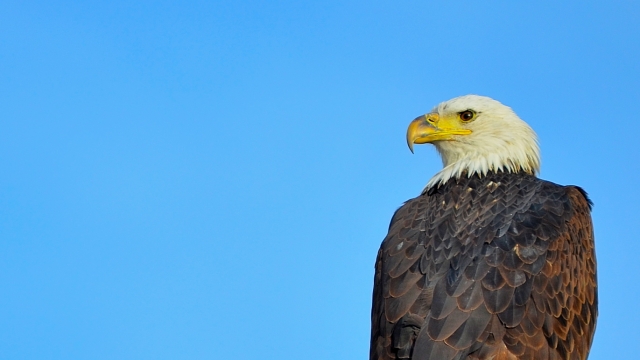Bald eagles have been a national symbol for centuries. Now, the once-endangered species are making a comeback.
There was a time not too long ago when the scene of eagles flying would have been impossibly rare.
That’s because bald eagles, the national symbol since 1782, came close to being wiped out, thanks to a World War II-era pesticide popular on American farms, DDT.
DDT seeped into streams and rivers and fish, and then, to the bald eagles that ate them. Their eggshells became so fragile they’d break before hatching.
By the 1960s, fewer than 500 eagle pairs were left anywhere. Even after DDT was banned in the 1970s, they were hard to find. Colorado had just three known nests in the entire state.
“It used to be when we started birding you'd see an eagle every 10 years, and then, it got to be a bald eagle every five years,” explained Jan Snyder, volunteer at the Bird Conservancy of the Rockies. “And then, you could, you know, see, maybe one a year which was really, really cool.”
Snyder spotted a bald eagle bakers dozen.
“We saw thirteen of them on the other side of Barr Lake,” Synder said.
After nearly going extinct, bald eagles have made a huge comeback across the country.
In Colorado, the number have nests have grown.
“More than 200 at minimum, and we think we probably have more like 400 or 500,” said Reesa Conrey, an avian researcher at the Colorado Parks and Wildlife.
On this day, Snyder and her partner, Bruce Snyder, are teaming up with Conrey, checking on a few of those nests at Barr Lake State Park near Denver, Colorado.
“I would say this is a pretty precarious nest,” Conrey said.
Conrey worries about this nest perched high in a dead tree.
“It’s really got the support of just one main stem. A similar nest blew down this spring with two eggs inside,” Conrey explained.
Today, Conrey wants to check out a report about a new nest nearby.
“We are headed toward the new nesting location of the pair that lost their nest last year during a storm,” Conrey explained.
A short hike and the group sees the nest.
“Our goal here is to get an accurate location on this nest tree,” said Bruce Snyder.
Volunteers with Bird Conservancy of the Rockies will keep tabs to see if the eagles move in permanently and maybe raise a few chicks.
Colorado wildlife officials have now launched a four-year bald eagle study, outfitting birds with transmitters so they can be tracked in real-time.
At a time when American bird populations are declining, researchers want to know how bald eagles are adapting to the increasing number of people moving to Colorado’s front range, and all the homes, highways, and shopping malls that come with them.
“Areas that used to be hunting areas for these eagles are now housing developments,” said Bruce Snyder. “And some of those eagles’ nests are getting hemmed in, and well, we're interested to see whether they stick around and manage to adapt with what's left, or where they leave for a new area.”
For now, the bald eagles seem to be sticking around and thriving. But Conrey says time will tell.
“It's a success story with some nuances,” she said. “I guess, you know, we're still concerned, and we still want to make sure it's our national bird.”



